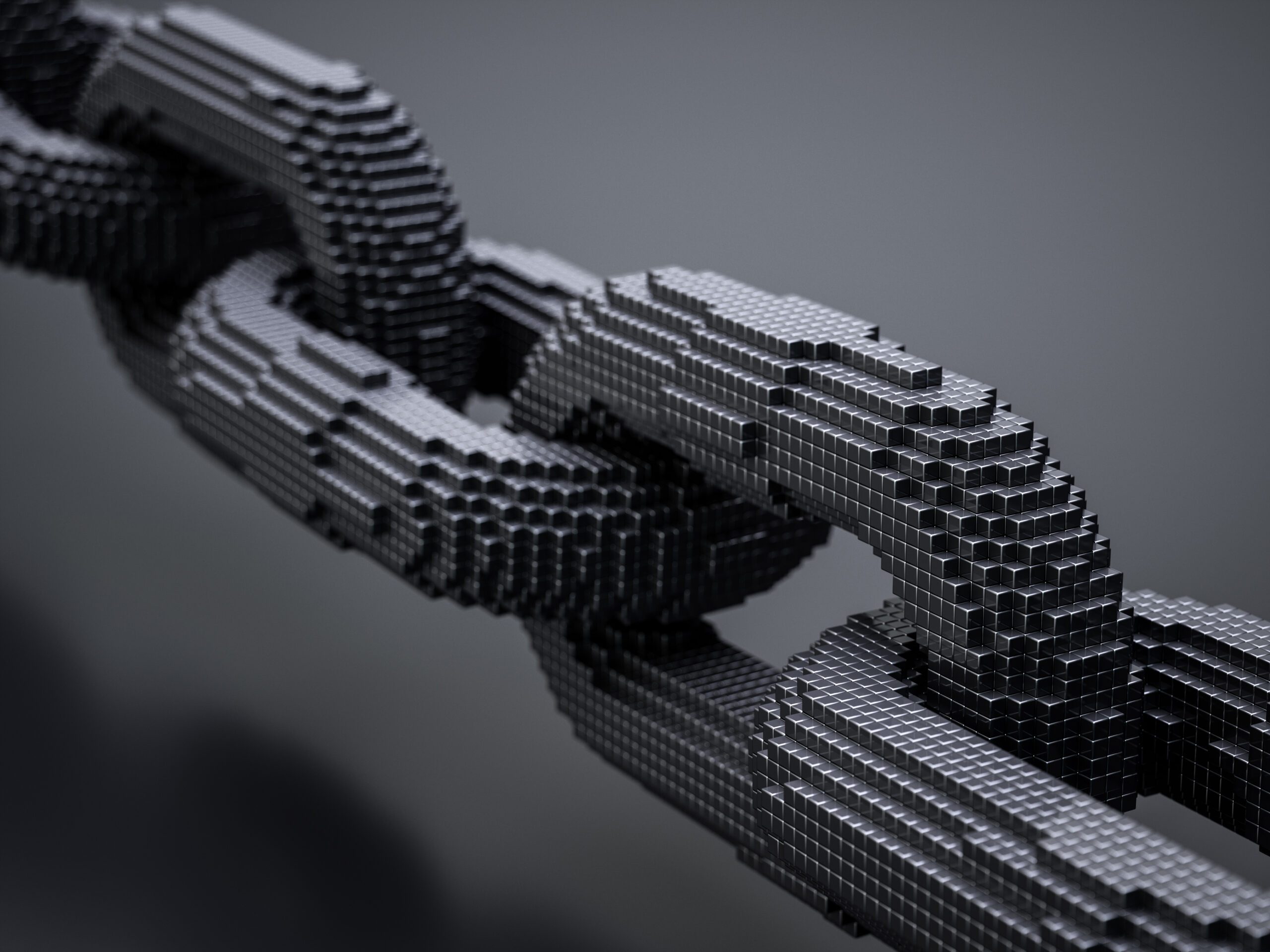COVID-19 has caused even the most robust supply chains to creak. What lessons can we learn and how should enterprises structure their supply chain so that digital technologies ensure goods and services flow?
Nobody needs to be told that 2020 was a year of massive disruption. The world changed, lives changed and business systems changed as everybody worked to adapt to the still-dynamic and inherently unpredictable landscape around us all.
Like many things resulting from the global pandemic, our wider perception of language changed and expanded. Non-technical people started to talk about online collaboration tools, non-medical people started to talk about epidemiology… and non-business strategists started to understand what supply chains were.
This demystification of the supply chain meant that everyone started to understand and appreciate the fact that these systems extend much further back than the endpoint supply of some goods or service that an individual or company is normally exposed to.
 Toilet paper trials from top to bottom
Nobody ‘just gets’ toilet paper from the shops and stores anymore i.e. people appreciate that paper pulp is machined, factories operate, road haulage trucks distribute products, warehouse supplies are managed, shelves are stacked and home delivery palettes are filled before finally – if we are lucky – we get our hands on a package with a fluffy bear or puppy on it.
Going forward then, we can all take a more open appreciation for the importance of supply chains. As we now engineer to make these systems digital from the ground up, we can apply technology at various aspects of the coalface in order to make sure that future systems are even more capable than they already are.
In general terms, we can say that the digital supply chain of tomorrow will be driven by integrated, cloud-based, algorithm-enabled software platforms that make extensive use of IoT devices including drones, sophisticated sensors and advanced robotics.
In more specific terms, we can see that the factory or shop floor is integrating its digital supply chain parameters and functions into logical workflows. The management tier is also fully aware of the state of supply chain related operations and is using the data from these internal systems to steer the business. A deeper level of cross-functional and cross-organisational collaborative integration allows the digital supply chain to empower departments with the ability to navigate around crises.
But let’s step back a moment and put our warehouse overalls on again. What are the actual mechanics playing out here in terms of the technologies being applied in the digital supply chains of tomorrow?
Toilet paper trials from top to bottom
Nobody ‘just gets’ toilet paper from the shops and stores anymore i.e. people appreciate that paper pulp is machined, factories operate, road haulage trucks distribute products, warehouse supplies are managed, shelves are stacked and home delivery palettes are filled before finally – if we are lucky – we get our hands on a package with a fluffy bear or puppy on it.
Going forward then, we can all take a more open appreciation for the importance of supply chains. As we now engineer to make these systems digital from the ground up, we can apply technology at various aspects of the coalface in order to make sure that future systems are even more capable than they already are.
In general terms, we can say that the digital supply chain of tomorrow will be driven by integrated, cloud-based, algorithm-enabled software platforms that make extensive use of IoT devices including drones, sophisticated sensors and advanced robotics.
In more specific terms, we can see that the factory or shop floor is integrating its digital supply chain parameters and functions into logical workflows. The management tier is also fully aware of the state of supply chain related operations and is using the data from these internal systems to steer the business. A deeper level of cross-functional and cross-organisational collaborative integration allows the digital supply chain to empower departments with the ability to navigate around crises.
But let’s step back a moment and put our warehouse overalls on again. What are the actual mechanics playing out here in terms of the technologies being applied in the digital supply chains of tomorrow?
 Toilet paper trials from top to bottom
Nobody ‘just gets’ toilet paper from the shops and stores anymore i.e. people appreciate that paper pulp is machined, factories operate, road haulage trucks distribute products, warehouse supplies are managed, shelves are stacked and home delivery palettes are filled before finally – if we are lucky – we get our hands on a package with a fluffy bear or puppy on it.
Going forward then, we can all take a more open appreciation for the importance of supply chains. As we now engineer to make these systems digital from the ground up, we can apply technology at various aspects of the coalface in order to make sure that future systems are even more capable than they already are.
In general terms, we can say that the digital supply chain of tomorrow will be driven by integrated, cloud-based, algorithm-enabled software platforms that make extensive use of IoT devices including drones, sophisticated sensors and advanced robotics.
In more specific terms, we can see that the factory or shop floor is integrating its digital supply chain parameters and functions into logical workflows. The management tier is also fully aware of the state of supply chain related operations and is using the data from these internal systems to steer the business. A deeper level of cross-functional and cross-organisational collaborative integration allows the digital supply chain to empower departments with the ability to navigate around crises.
But let’s step back a moment and put our warehouse overalls on again. What are the actual mechanics playing out here in terms of the technologies being applied in the digital supply chains of tomorrow?
Toilet paper trials from top to bottom
Nobody ‘just gets’ toilet paper from the shops and stores anymore i.e. people appreciate that paper pulp is machined, factories operate, road haulage trucks distribute products, warehouse supplies are managed, shelves are stacked and home delivery palettes are filled before finally – if we are lucky – we get our hands on a package with a fluffy bear or puppy on it.
Going forward then, we can all take a more open appreciation for the importance of supply chains. As we now engineer to make these systems digital from the ground up, we can apply technology at various aspects of the coalface in order to make sure that future systems are even more capable than they already are.
In general terms, we can say that the digital supply chain of tomorrow will be driven by integrated, cloud-based, algorithm-enabled software platforms that make extensive use of IoT devices including drones, sophisticated sensors and advanced robotics.
In more specific terms, we can see that the factory or shop floor is integrating its digital supply chain parameters and functions into logical workflows. The management tier is also fully aware of the state of supply chain related operations and is using the data from these internal systems to steer the business. A deeper level of cross-functional and cross-organisational collaborative integration allows the digital supply chain to empower departments with the ability to navigate around crises.
But let’s step back a moment and put our warehouse overalls on again. What are the actual mechanics playing out here in terms of the technologies being applied in the digital supply chains of tomorrow?
Today, some of these decisions come back around to haunt manufacturers and retailers in the form of lack of control and visibility. Bryan Nella / InforElements of digital supply chain resilience Key to building more resilient digital supply chains of tomorrow is the application of Artificial Intelligence (AI). Applied to every aspect of company workflows from demand prediction to equipment maintenance schedules to tracking the market’s cyclical supply fluctuations, AI will now become regarded as both an operational fuel and foundational building block for modern business. Closely related to the use of AI for daily operational task management within the digital supply chain is the ability to stress-test existing systems and run ‘what if’ scenarios. This allows organisations to take more immediate action aimed to provide resilience against all but the most unwieldy forces of nature in the future. As the digital supply chain grows inside a working business, its ability to help de-risk the relationships that exist inside an organisation expands. These are relationships between suppliers and consumers, relationships between departments and machines… and relationships between people and people. Suddenly, at this point, the term ‘strategic partnership’ graduates out of the marketing brochure’s puff and fluff to actually start meaning something i.e. yes, says business X, we work in a strategic relationship with business Y because it connects us to supply resources A, B and C… not just because we want to give the firm an award on a piece of bent glass at our annual dinner. Overall, there is a new observability and visibility advantage gleaned from the development of a resilient digital supply chain. As a core underpinning element within a higher-level ERP platform, nobody needs to pick up the phone to ask when the next goods (or tangible services) shipment is likely to drop, all that knowledge already exists in the system in the form of data.
…Sectors, like retail, are still reimagining their business models and planning for a future that may not exist yet. Chris Andrews / EY Consulting UK&IChris Andrews, director at EY Consulting UK&I reminds us that the events of the past 12 months have highlighted the complexities and vulnerabilities within the global supply chains of many industries. “While some sectors, such as consumer staples, have been able to double down on manufacturing output and progress planned investments, other sectors, like retail, are still reimagining their business models and planning for a future that may not exist yet,” said Andrews. Andrews explains that currently, when his firm engages with clients, themes of value chain risk, resilience and security of supply are at the forefront and leading the conversation. “As supply chain leaders wrestle with these themes, their requirements inevitably reach the CIO’s desk and prompt the question: ‘How do I assess 360-degree risk across my global supply chain and mitigate disruptions before they materialise?’ With risk and resilience fast becoming established supply chain pillars, the race to harness the power of ERP systems, IoT and AI to address 360-degree risk will intensify,” he added. Enabling information access by policy-based identity management is a prerequisite, but that’s another story in itself. The working result of all these technologies coming together brings with it an integration and orchestration challenge, but the end result is a more maneuverable corporate ship that can successfully mitigate for problems, create newer and faster streams of innovation which steer towards growth. Beyond the four walls of business In terms of industry resonance here, Bryan Nella, senior director for financial supply chain at Infor points out that, “For years we’ve seen the outsourcing of essential supply chain tasks to suppliers, third party logistics providers, agents and even banks. Today, some of these decisions come back around to haunt manufacturers and retailers in the form of lack of control and visibility. Resilience and agility are priorities today but without the right tools or connective infrastructure to collaborate with trading partners, it’s impossible to see and control operations beyond your four walls.” Nelson Petracek, CTO at enterprise data company Tibco, agrees that a solid architectural core is a key component of any resilient supply chain. He asserts that this is a core that, in addition to being typically based on cloud and AI/ML related capabilities, can be augmented by the creation of parallel, real-time digital twins. These digital twins, by using capabilities related to integration, APIs, data management, data science – and even IoT or blockchain – can mirror, monitor and manage real world entity behaviour in a contextual manner. “But digital twins are no longer just about IoT; they can also represent people, processes and entire departments or organisations, or set of organisations. Furthermore, these digital twins can act as passive listeners and track key events across a supply chain (e.g. for reporting or regulatory purposes), or they can be active and utilised to proactively drive supply chain behaviours. In short, digital twins have the ability to make the supply chain more dynamic, responsive, transparent and can shorten end-to-end decision latency when responding to opportunities or threats. All key attributes of tomorrow’s supply chain,” explained Tibco’s Petracek.
Supply chain planning will make use of more and more data as cloud solutions make it easier to access. Colin Elkins / IFSVP for manufacturing industries at IFS Colin Elkins reads from the same core mantra and agrees that the foundation of a solid digital supply chain is connected data. He asserts that with all that operational data out there comes opportunity i.e. opportunity to test, analyse and simulate disruption. “We also see an opportunity to utilise technology like machine learning to enhance supply chain resilience and predict arrival and delivery times. Supply chain planning will make use of more and more data as cloud solutions make it easier to access. Information like ship docking times, GPS navigational data, IoT sensor data on products and transport will provide a global picture of the location and state of products and materials. Driven and augmented by AI, supply chain visibility will never be greater,” said Elkins. There is a positive virtuous circle we can get to here and Elkins agrees that as companies adopt a circular economy strategy, we will see less pressure on global supply chains for virgin materials and new components. He concludes that this will be accompanied by an increased focus on ‘internal’ supply chains to manage returns, reuse, remanufacturing and recycling to keep more product and material under the control of the manufacturer and not suppliers and distributors.
…Digital twins are no longer just about IoT; they can also represent people, processes and entire departments or organisations. Nelson Petracek / TibcoSupplies for tomorrow at web-scale The application of these digital supply chain technologies is no plug-and-play affair; in very few cases are any of the software tools in this space plug-ins, add-ons or upgrades to many of the pre-existing systems that organisations across every vertical will already be running. While vendors in the space will advocate the virtues of cloud-based delivery and the advantages of Digital Supply Chain-as-a-Service (DSCaaS) technologies, there is a core ground level architectural planning phase that organisations will need to take on if they are to build for resilient scalable growth in the future. That word scalable is important. Sometimes used to talk about the need for web-scale growth and adaptability, 2021 and onwards should be a time when every producer, supplier and consumer understands more clearly the need for a product that might one day be needed by the whole planet at large. We can take some of the lessons from recent times and create a more intelligent, more adaptable and altogether more resilient global digital supply chain network that draws on computing power, but is equally twinned with greater empathy for real human needs. Whether it’s toilet paper, tinned tuna, Toblerone, Tattinger or antitoxins, nobody should be left waiting in line. Adrian Bridgwater, Freelance Technology Journalist




